Ask Ethan No. 71: Heavy Planets, Easy Sun?
- Transfer
The sun is almost entirely composed of hydrogen and helium, and on Earth these elements are very few. How did this happen?
The greatest advantage of youth is the impossibility of knowing what is impossible.
- Adam Brown
Every week you send me your questions, from which I choose the best. But sometimes it’s hardest to answer the simplest questions. For example, look at the sun and the stars, and then at the planets. It could be decided that they differ only in mass - that if the planet is made very massive, it will become a star - but how do you then explain the simple observation made by Greg Rogers:
If the Sun (and all stars) are mainly composed of hydrogen and helium, why is the distribution of matter among the planets different from them?
The distribution of the substance of the planets is not just different from the stars - it is completely different.

If we look closely at the surface of our planet, we will find a bunch of all sorts of elements: about 90 elements found in natural deposits. We have enough hydrogen, but it does not dominate, especially if we count by mass. The air mainly consists of nitrogen and oxygen; the ocean covering the planet is 11% by mass of hydrogen (each oxygen atom is 16 times heavier than hydrogen); the solid matter of living beings and inanimate things, from stones to dirt, from plants to animals, contains quite a lot of hydrogen, but much more sodium, oxygen, silicon, aluminum and many other elements in it.

Immersed in the depths of the planet, we find an even more difficult situation. Of course, helium is stored somewhere in the underground voids, but it was the result of the radioactive decay of superheavy elements over billions of years. A small amount of hydrogen is also there, but there will be much more heavy elements: metals such as iron, nickel, cobalt, as well as elements that exceed the stability limits in the periodic table.
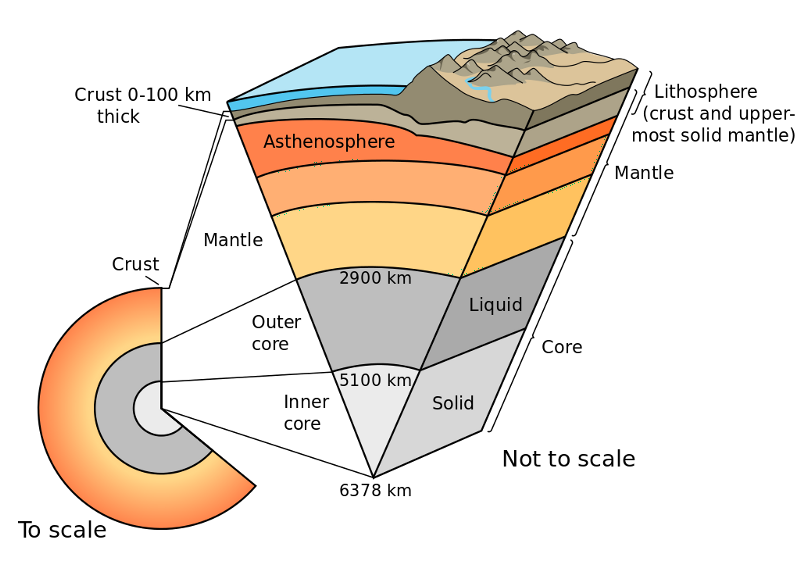
We know this, as the layers of the Earth become denser as they sink into the planet. And this is not only due to gravitational contraction; the heaviest elements just fall down. This is very important, so I will repeat: in youth, a large variety of elements was present on Earth, but the heavier elements fell down, and the lungs remained “floating” at the top - just as less dense liquids float above the more dense ones.

Fluids and items to increase the density: a ball for ping-pong; lamp oil; medical alcohol; plastic bottle cap; vegetable oil; beads; water; cherry tomato; dishwashing liquid; milk; dice; maple syrup; corn kernels; corn syrup; honey; metal bolt.
So, studying the surface of the Earth, we see the lightest elements from which it is made. Most of the other elements in its composition are heavier and denser. Therefore, we really have very little hydrogen and helium.

We now turn to the sun and the stars. Let's look at the solar spectrum: there are different absorption lines on it, representing the whole range of elements present on Earth, as well as several that are not found in nature.
What is immediately apparent is the two sets of absorption lines, for hydrogen and helium, which are very strong. When we started to understand how stars work, and how temperature, ionization and abundance of elements are interconnected, we discovered that the Sun consists of 70% hydrogen, 28% helium, and 1-2% other elements. .
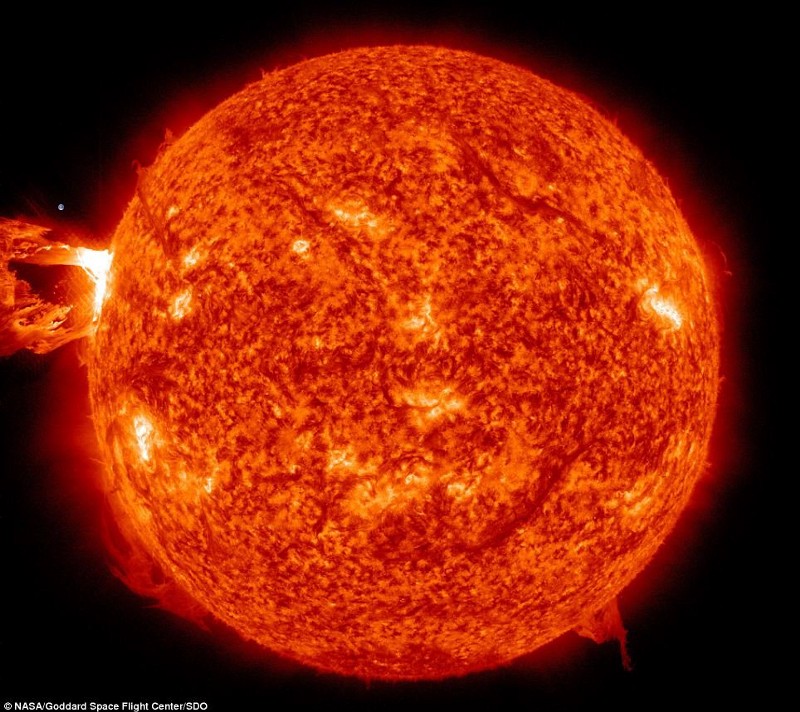
And the Earth is 99% composed of "other elements"! From what? To understand this, let us go back to the place of their birth: to the nebula from which the stars are formed. This is a molecular cloud, mainly consisting of hydrogen, and containing a lot of helium and a few other substances - which begins to collapse under its own power.
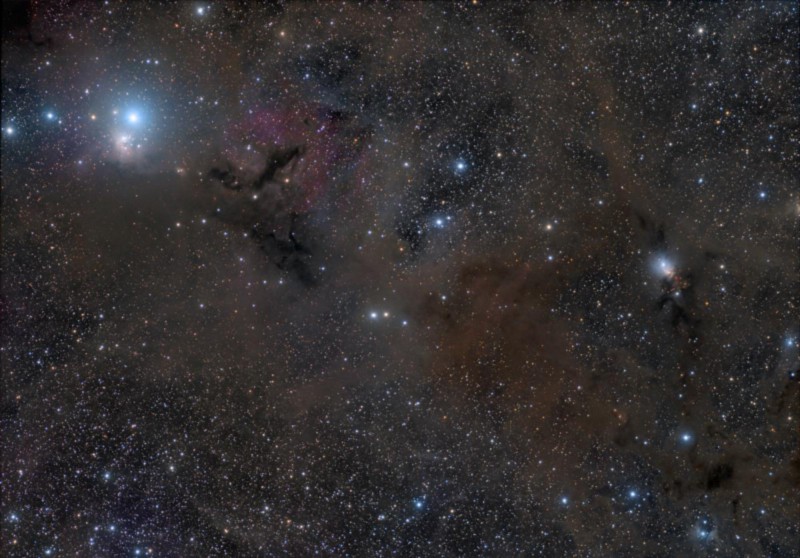
In the early stages of star formation, gravity is most important. Lumps appear in the gas cloud, their density increases, and areas with high density attract more and more matter. Since gravitational collapse occurs fairly quickly, and there is no effective method to radiate energy from gas clouds, collapse leads to heating of the inner layers of these lumps. After a short time, the hydrogen in the nucleus reaches the desired temperature and density to start nuclear fusion.
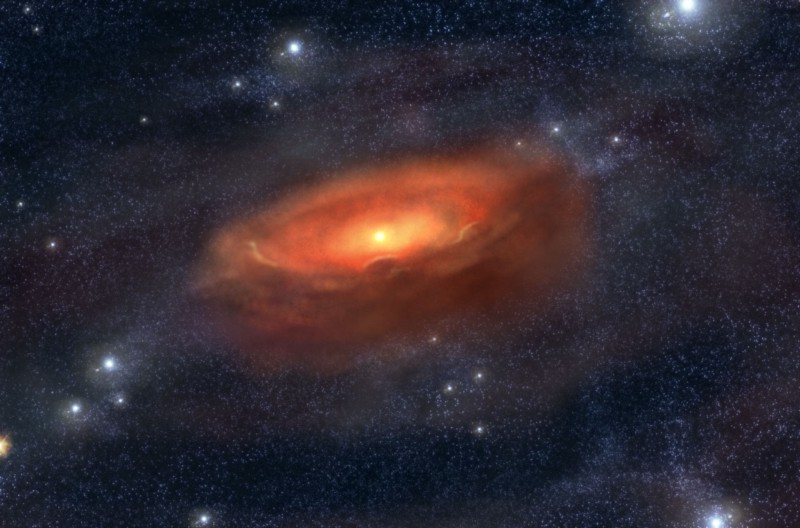
Newborn stars are different: different colors, with different temperatures and masses. But most of them have a common feature - they are not formed in isolation, but appear in the company of other lumps of matter. The largest of them, having received the greatest odds, will grow into rocky planets, gas giants, or, in extreme cases, into other stars.

At the same time, the energy emitted by the parent star in the system is scattered out and interacts with what is found in its path. This is the solar wind, ions, electrons, and, of course, photons. And with what these energy particles meet?
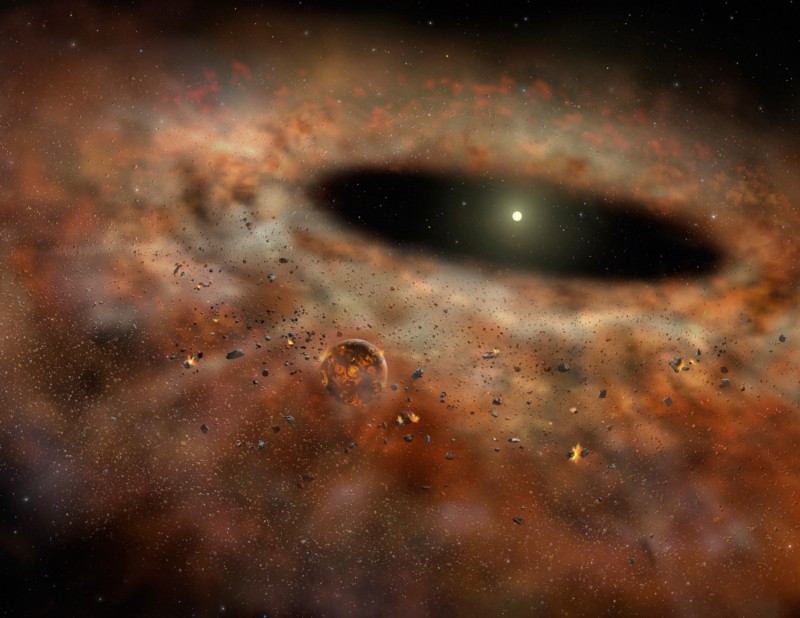
In the case of each planet or planetoid, they are found with the most external, with the lightest elements, since it is they that “float” on the surface above the heavier ones that sink near the center. Imagine that you are kicking a soccer ball with all your might, and then think what a difference it will be when you kick a bowling ball. Do not think about the leg - imagine the ball. The soccer ball will gain great speed and fly away, and the bowling ball will hardly move much.
Why? Because the same impulse of energy, imparted to objects of different masses, makes the lungs move faster.
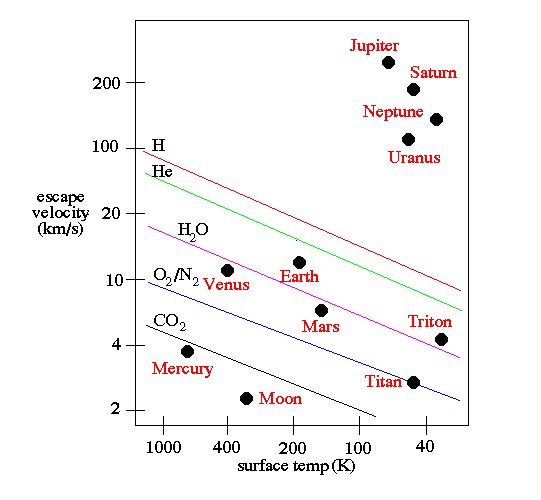
Chart of runaway gases from the surface of the planets. A gas line drawn over the planet means that it can escape from its gravity. That is why the rocky planets do not have an atmosphere of hydrogen and helium, and the gas giants have
such a kick on almost all worlds enough to knock almost all hydrogen and all helium into interstellar space. The energy emitted by a star is enough to give these atoms the speed necessary to overcome attraction, and they become unconnected by gravity with this world.
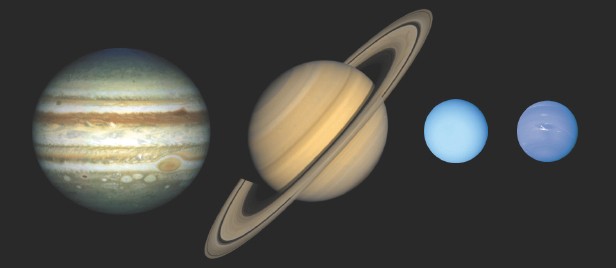
Only in gas giants, worlds with a mass exceeding that of the earth, at least twice, does gravity strong enough to hold helium and hydrogen. And the more massive the world, the thicker its shell can be. It is believed that the gas giants have a dense solid core consisting of heavy elements, but it can be achieved only after passing through many layers, where hydrogen predominates.
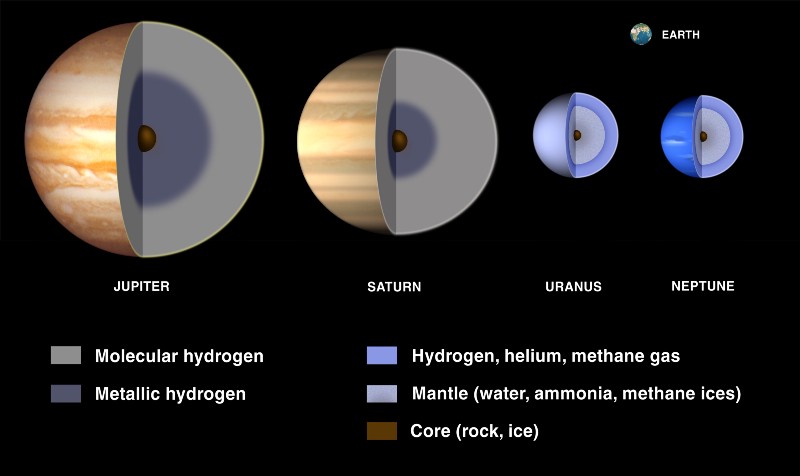
So, answering your question, Greg, all the planets are created from the same materials, and if it were not for the radiation emitted by the stars, hydrogen and helium would predominate on each planet, like on the Sun and on other stars. But because of its proximity to the source of energy, all elements of the planet receive an energy kick, and in the case of the stony planets known to us, it is enough to rid the world of all free hydrogen and helium. Only by acquiring a very large mass, and being far enough away from the parent star, can the lightest of the elements be kept against all this radiation. And the more massive you are, the more you can hold. And you can increase the mass to about 8% of the mass of the Sun, after which you will begin to convert hydrogen into helium in your core, and you will become a star!
That is why the elements are located where they are. Thank you for the wonderful question, and I hope that the explanation has been made clear for you and for the rest. Send me your questions and suggestions for the following articles.
